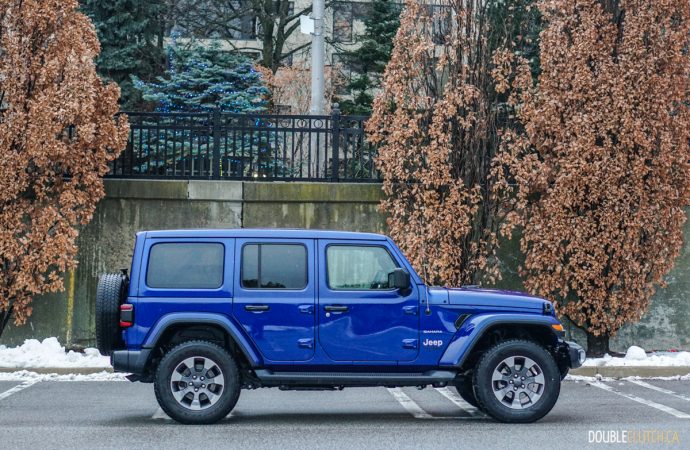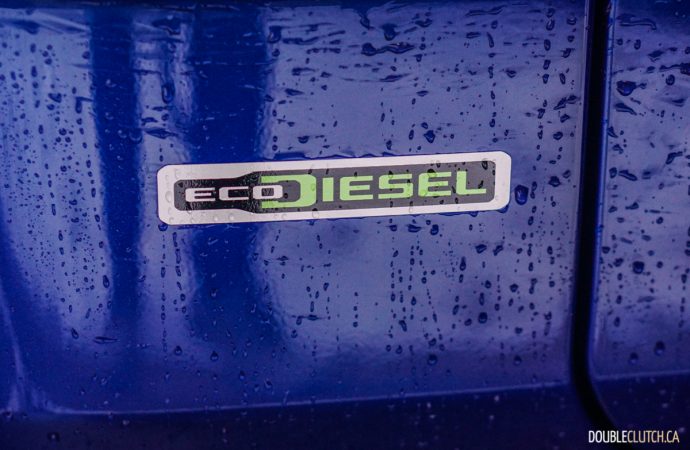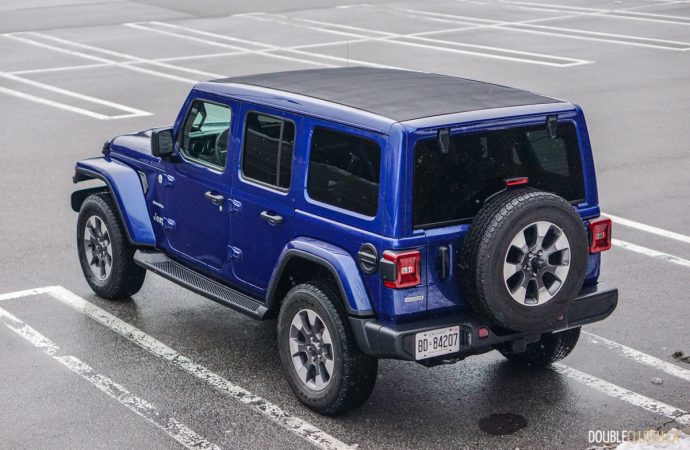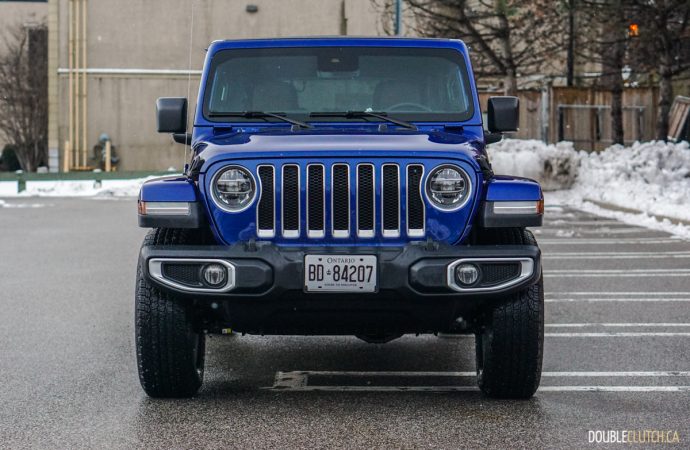There are few, if any vehicles that are more iconic than the Jeep. Yes, that name is now an entire brand, but when you hear the name, you picture what is known as the Wrangler. Refreshed in 2018, the fourth generation, or “JL” Wrangler is a better vehicle in every single way than the third generation “JK”. I know this first hand, as I owned a brand new JK for two years. After spending a week in a 2021 Jeep Wrangler Sahara EcoDiesel equipped with the all-new diesel option, I fell deeply in love.
The JL platform already fixed the majority of the gripes many people had with the JK. A larger, useable trunk space, makes this vehicle actually liveable, without constantly reminding drivers of the sacrifices they have made to look cool. The automatic has the correct amount of gears to make it reasonably quick and modern, and the manual is actually quite nice to drive in the city. The only thing lacking in the JL platform was an engine with enough grunt to overcome the inherent sluggishness that comes with the Wrangler. The diesel engine tested here, completely changes the game.
The Wrangler stands out against any other vehicle on the road because it is not aerodynamic. It is riddled with upright surfaces, flat spots, big fenders, and things that generally resist air movement. Add to that the body-on-frame construction and heavy axles that make the Wrangler incredibly capable off-road, and you have one hefty, boxy lump of steel to try to get up to highway speeds. The 3.0-liter EcoDiesel V6 makes short work of all of that, making you entirely forget what you’re driving.
Getting up to highway speeds is no longer a question of whether or not the on-ramp is long enough, but rather a question of when you should be letting up on the throttle. Around town, stop signs and side streets are a delight, really making the Wrangler feel like a fun toy that can go wherever it wants. The diesel sound is ever-present, and seems oddly out of place at first. It gives a bit of a giddy feeling like you have a secret nobody else knows, and after a few days you never want to hear anything else in a Wrangler again.
As with all Jeep Wranglers, the interior is utilitarian in design, with large buttons to allow for operation with gloves, or to reach in a panic when you’re trying to crawl a rock face. The cabin is narrower than most other vehicles due to the body style being inset from the fenders and steps, and this does make things a bit cramped at times. Everywhere you look there is an image of a Jeep, or the iconic seven bar grille. From the windshield corners to the top of the shifter knob, there is no way drivers will forget what they’re driving.
Our test vehicle was the road-going top-tier Sahara trim, with an as-tested MSRP of $70,390. One might argue the Rubicon is a higher end trim, but it does away with some creature comforts in exchange for off-road capability, so they are really two different paths. Everything expected in a modern family vehicle is present in the Sahara, such as keyless entry, heated seats and steering wheel, Android Auto and Apple CarPlay, blind-spot assist and other safety systems. Leather seats and rubber mats make the interior easy to clean up after a really muddy day, and Wrangler interiors are designed to be able to be cleaned with a hose after those special outings.
To make going topless in the Jeep even easier, our test vehicle was equipped with the Sky One-Touch Power Top ($3,995). This is a full length powered, retractable convertible roof that exposes the entire cabin to the great outdoors without having to pull over. Hardtop-equipped Jeeps need the panels removed and stored in the trunk, while soft-top models require the roof to be folded back manually while standing on the side steps.
Beyond the new diesel engine, I was really excited to test out this new roof option. It adds the convenience every other convertible on the market has, without shrinking cargo space like the other two options do. While the roof worked flawlessly and was really nice to have, the amount of road noise is significant. For the few days of the year we Canadians really get to enjoy the fresh air, you can take the extra few minutes to pop off the roof panels or flip back the soft top.
More expensive than the roof, and well worth the money is the 3.0-liter turbodiesel V6, a $7,395 option. Rated at 260 horsepower at 1,400RPM, this number is lower overall than the Pentastar V6, but is an incredible amount of power at that low of an RPM. Pair that with the monstrous 442 lb-ft. of torque at 3,600RPM and you instantly can see why this engine makes a diesel Wrangler an entirely different vehicle to drive.
All of this comes with a fuel economy rating that finally finds itself in fair competition with the crossovers and SUVs that would be cross-shopped against it, including its own brand-mate, the Grand Cherokee. Environment Canada rates the EcoDiesel Wrangler Unlimited at 10.6L/100km city, 8.1L/100km highway and a combined 9.5L/100km. This significantly better, if not in line with most mid-sized crossovers sold today.
The EcoDiesel engine, and the upcoming 4xe plug-in hybrid come at the right time for the Jeep Wrangler, as rugged, off road competition has come back onto the market recently. The Ford Bronco is expected to take a cut of Wrangler sales, while the high powered off-roading pickup truck wars are heating up as well. These off-road built behemoths could divert some buyers who are just looking to make an off-roading statement in their driveway.
No matter what happens, none of these will hold a candle to the legacy the Wrangler has had for decades, and the new engine choices breathe incredible new life into an already massively improved platform. The 2021 Jeep Wrangler Sahara EcoDiesel is simply marvelous, and we are excited to see how the 4xe holds up in the fuel economy arena too.







